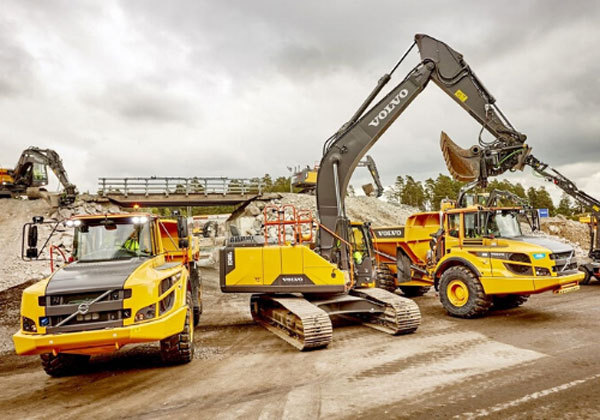Diesel-powered construction vehicles have a longer life than smaller commercial road vehicles like pick-ups. The lifespans of diesel-powered engines and hydraulic systems average from 10,000 to 12,000 hours of operation, or about 10 years, depending on use and care.
Diesel power today represents 98 per cent of energy used in construction. Although diesel’s cost per litre has increased lately, causing concern over operational costs, it’s a hard fuel to replace in terms of overall economy and low-end torque power.
There are different types of diesel fuel. Most off-road and site equipment uses “red diesel.” It’s chemically identical to the “clear” diesel seen at most refuelling stations, except is not taxed federally or provincially.
Because it is sold cheaper, the fuel is dyed red to differentiate it, helping to discourage its use on the road. There’s also been an increased use of biodiesel and biodiesel blends. These are cleaner burning due to being derivatives of animal fats and plant oils.
Diesel’s current dominance, long life and various advantages make any significant transition to alternate power sources a long-term prospect. Nevertheless, most major construction equipment makers are placing big bets on battery-electric and hybrid power, with a steady stream of new vehicles scheduled for release in 2023.
These range from compact loaders offered by nearly all manufacturers to the massive 55-ton battery-electric telescopic crawler crane announced by German-based Sennebogen at Bauma 2022 in Munich.
The move away from diesel reflects a global commitment to reduce carbon emissions in all vehicles, both on and off the road. Some observers believe most leading equipment manufacturers will be done with diesel-powered products as early as 2040.

Another possible power source is hydrogen, either as cells that create electricity delivered to vehicle batteries or as a direct fuel alterative used in modified internal combustion engines.
Despite being much lower in emissions than diesel, neither battery-electric nor hydrogen can honestly claim to be a zero-emission alternative.
The source of electrical generation required to recharge batteries will always be questioned regarding its “cleanliness” and most hydrogen produced today is based on methane gas. Therefore, although both sources promise to become greener over time, the evolution will be a work in progress for decades.
Meanwhile, the arrival of winter has brought bad news concerning the loss of vehicle range being experienced by EV cars and trucks as temperatures drop.
In fact, the American Automobile Association estimates EVs could lose 40 per cent of their range when the mercury drops to -7°C. Ford has suggested owners of F-150 Lightning pick-ups park them inside at night and use heated seats and steering wheels instead of the vehicle’s HVAC system in order to increase range.
No definitive studies are currently available regarding the effect of cold weather on battery-electric construction equipment. However, any range or power reductions could weigh significantly on worksites in northern climates, raising questions regarding operational management in the winter.
Recharging vehicle batteries on remote locations has always been a challenge. Ironically, either onsite diesel generators are needed or the equipment needs to be moved by truck and trailer to a charging station located perhaps miles away. Portable solar arrays and large-scale battery storage devices are seen as possible solutions.
Even in moderate temperatures, time-and-motion planning is required for electric-battery equipment in order to optimize their effective working day and to minimize any lengthy recharges.
Manufacturers may choose to increase the vehicle battery size to counter this, but that will add to overall vehicle weight, which impacts maximum loads, tire wear and transportation between sites, not to mention increasing vehicle purchase costs themselves.
Cost will always limit any mass transition away from diesel. Battery-electric construction equipment may require less maintenance than internal combustion engines, however the higher initial capital outlays are significant for operator-owners of any size.
The result is while the prospects for battery-electric and even hydrogen replacement are promising power sources from a climate action perspective, diesel will be a tough act to follow.
John Bleasby is a Coldwater, Ont.-based freelance writer. Send comments and Inside Innovation column ideas to editor@dailycommercialnews.com.











Recent Comments